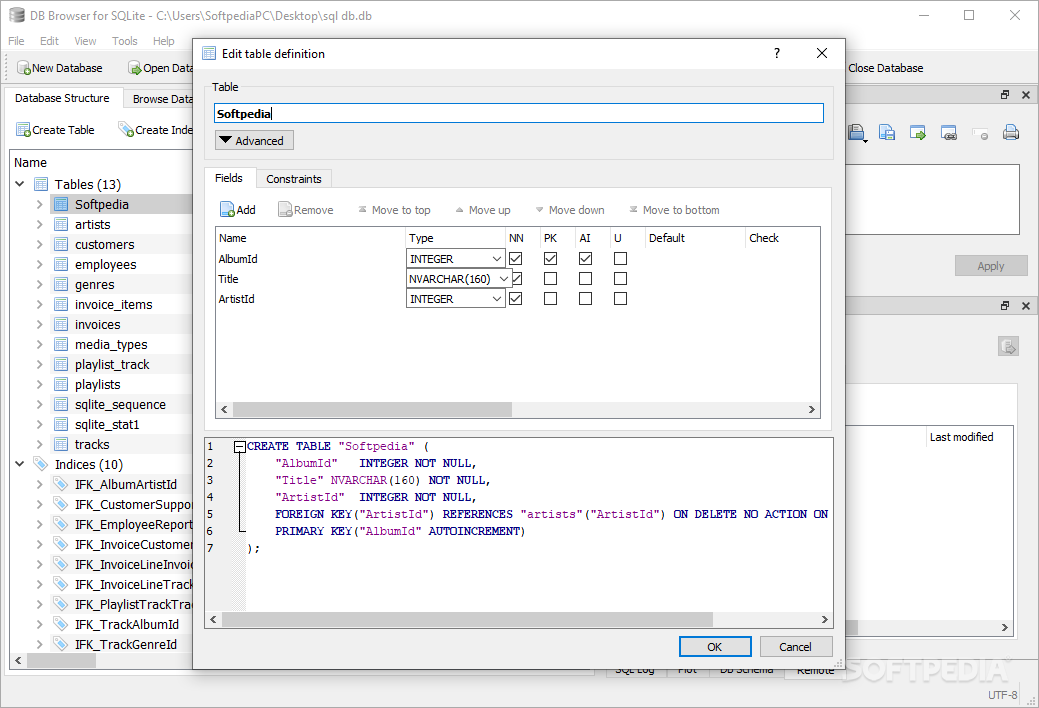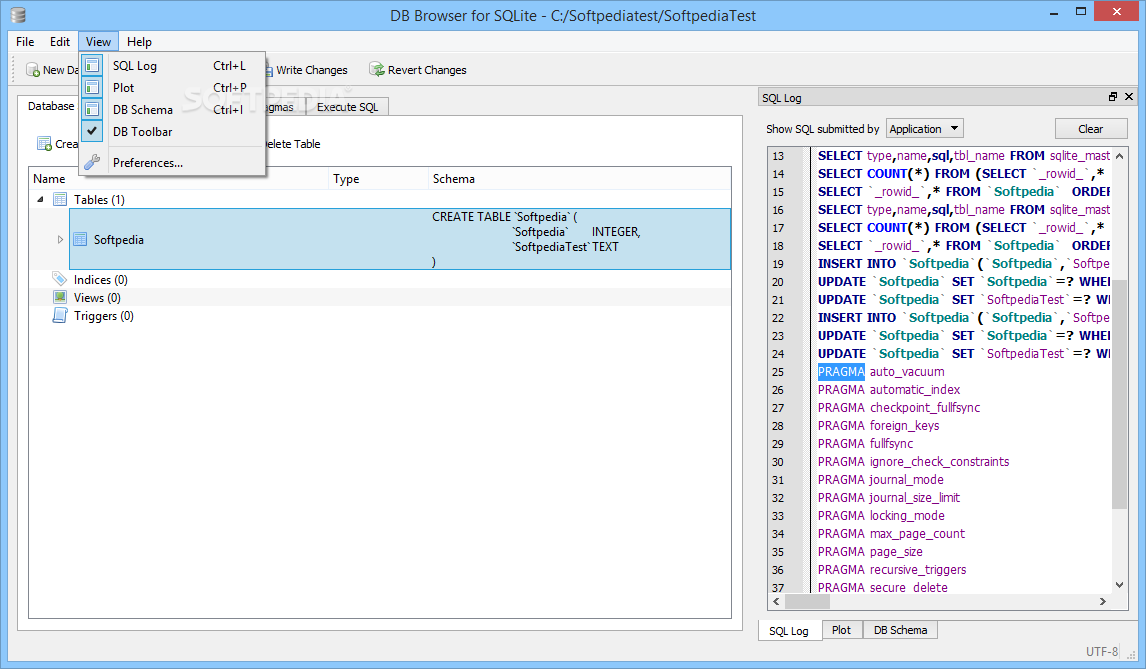
- #DB BROWSER OR SQLITESTUDIO HOW TO#
- #DB BROWSER OR SQLITESTUDIO INSTALL#
- #DB BROWSER OR SQLITESTUDIO UPDATE#
- #DB BROWSER OR SQLITESTUDIO FULL#
VNC already comes with Raspbian all you need is to download client software to your PC. You may want to connect a monitor or use a VNC client to access the Raspberry Pi desktop like me. To run the SQLite manager, you will need to work from the Raspberry Pi desktop. Therefore, you should also consider installing SQLite manager, which brings a graphical user interface to work with SQL databases.

#DB BROWSER OR SQLITESTUDIO FULL#
We performed all the tasks from the command-line tool.Įventually, you will want to have full control of the database and see the whole picture. Previously, we have installed an SQLite into Raspberry Pi, created a database and table with only a few lines of script. This is why SQLite is preferred on small devices like mobile phones, embedded devices, and Raspberry Pi. There are no initial server configurations required – all you need is to create a. SQLite is a serverless engine, meaning that the whole database is stored in a single file, and all transactions are reads and write from the file.

It occupies a little space on the device – a bit more than 500KB, but offers most of the features implemented on other SQL database tools. Once you’re done, you can click on Write Changes button as marked in the screenshot to save the changes to the database.SQLite is a lightweight but powerful database management tool. You can click on the record and modify it as you need. Now to insert data into the table, to go the Browse Data tab, change the table to users and click on New Record as marked in the screenshot below.Īs you can see, an empty record is added. The table is shown in the left side of the DB Browser window. SQLite Database browser is a lightweight GUI client for SQLite database, based on Qt library development, mainly for non-technical users to create, modify and. So click on OK as marked in the screenshot below.
#DB BROWSER OR SQLITESTUDIO HOW TO#
This is enough to demonstrate how to use DB Browser for SQLite to work with SQLite 3 databases. Now click on Add field button again, create a new field lastname and change the Type to TEXT, and mark the Not null checkbox as shown in the screenshot below. Now click on Add field button again, create a new field firstname and change the Type to TEXT, and mark the Not null checkbox as shown in the screenshot below. Now change the field name from Field1 to id, leave the Type to INTEGER and mark the PK, AI and Not null checkboxes as shown in the screenshot below. You should see a new field Field1 being created. Now click on Add field button as marked in the screenshot below. Type in a table name in the marked section of the screenshot below. Once you click on Save, you should see the following window. Once you click on New Database, you should be prompted to save the SQLite database as shown in the screenshot below. You can click on New Database to create a new SQLite 3 database using DB Browser for SQLite. Click on it.ĭB Browser for SQLite should start as shown in the screenshot below. Now you can go to Activities or Application Menu of your desired desktop environment and look for SQLite and you should see DB Browser for SQLite icon as shown in the screenshot below. Now press ‘y’ and then press to continue.ĭB Browser for SQLite should be installed.
#DB BROWSER OR SQLITESTUDIO UPDATE#
Installing SQLiteįirst update the pacman package repository cache of your Arch machine with the following command:
#DB BROWSER OR SQLITESTUDIO INSTALL#
In this article, I will show you how to install SQLite on Arch Linux.

SQLite is open source and a cross platform database. If you think your database file might be larger than the largest file your file system supports, you should consider using another database system like MySQL or MariaDB or PostgreSQL. To avoid the limitations of SQLite, you should use a file system that supports a big file. For example, on FAT 32 file system, the SQLite database file can be as big as 4GB. The file size of a single SQLite database file depends on the file system you created the file on. Since it’s a file based database system, it has some limitations. You can also use SQLite for your websites and apps if it doesn’t need to store too much data. SQLite uses less memory, so it is ideal for embedded systems like Android. It does not have any dependencies like other big databases. SQLite is a lightweight file based database system.


 0 kommentar(er)
0 kommentar(er)
